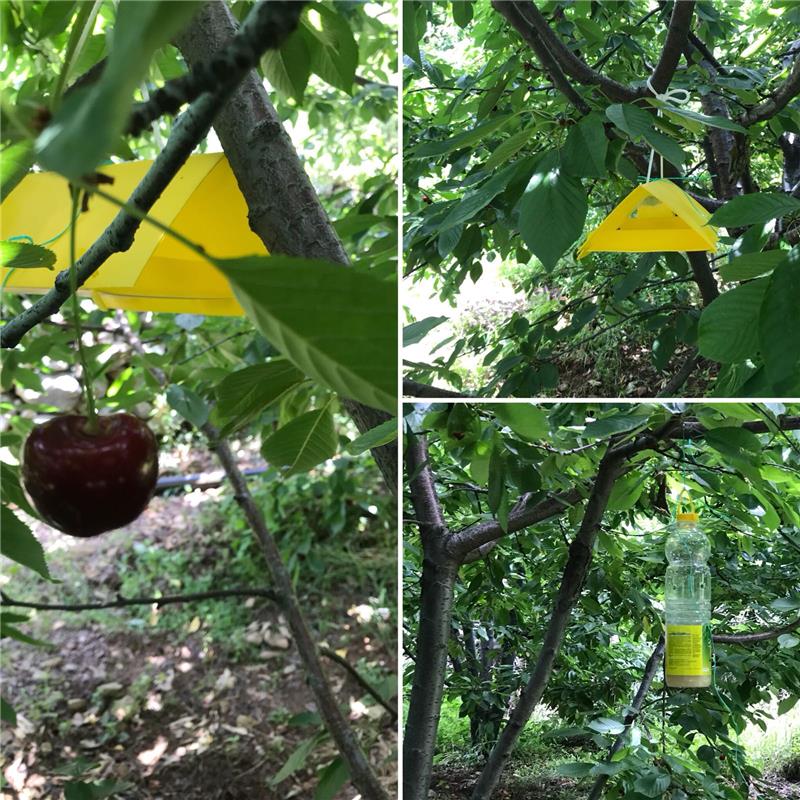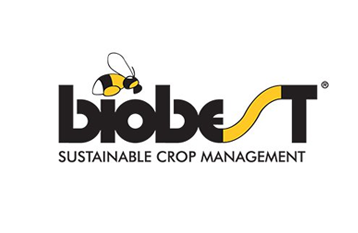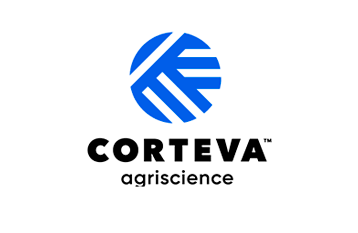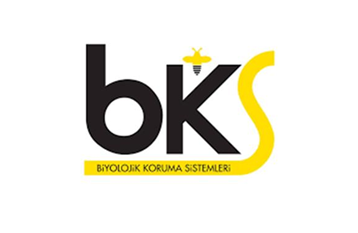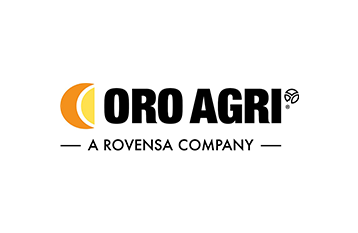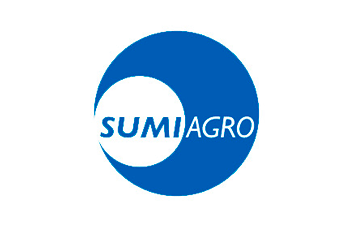OUR R&D STUDIES ON CHERRY FLY FIGHTING
Cherry Fly
(Rhagoletis cerasi L.)
Definition, way of life and damage:
Adults of the cherry fly are easily recognized by their bright black thorax and yellow scutellums at the tip of the thorax. Its eyes are greenish blue and its legs are black. Its transparent wings have 4 vertical bands, three long and one short, in bluish-black color. The adult male fly is 4 mm long and the female is 5 mm long. Eggs are elongated, oval and ivory white in color. Larvae are legless and creamy white. The length of the larva is 0.6 mm at the beginning and 6 mm when it is close to pupae. Pupa is barrel shaped and light yellow in color. The pupa is 4 mm long and 2 mm wide.
The cherry fly spends the winter as pupae in the soil. Adults begin to emerge in late April or early May, depending on the temperature, when the average monthly temperature is above 15°C. The emerging adults mate one week after feeding. Mating females lay their eggs by puncturing the ripening (me falling) fruits with the egg-laying tube (ovipositor). They lay an egg on each fruit. By secreting pheromones on the fruits they lay eggs, females prevent other females from laying eggs on these fruits. For this reason, it is not possible to lay a second egg on the same fruit. Adults live for 4-7 weeks and a female can lay 40-100 eggs in her lifetime. The hatched larvae develop by feeding on the fleshy part of the fruit. When the larva matures, it leaves the fruit and goes into the soil and becomes a pupa at a depth of 2-5 cm. Adult flies emerge from these pupae in the spring. The period from egg to pupa is 2-3 weeks. This pest produces one offspring per year.
The larvae of the cherry fly feed on the fleshy part of the fruit, causing worms and premature shedding of the fruits. The market value of harvested wormy fruits also decreases. The damage of the cherry fly is usually seen in the middle and late varieties. The damage increases in years when the weather is intermittently rainy, the daily temperature averages are above 16-18°C, especially above 20°C, and the number of hot days is high. In such years, the rate of worming in the fruits can be up to 80%.
This pest causes damage to cherries and cherries. Wild cherry and some Lonicera species are also hosts.



